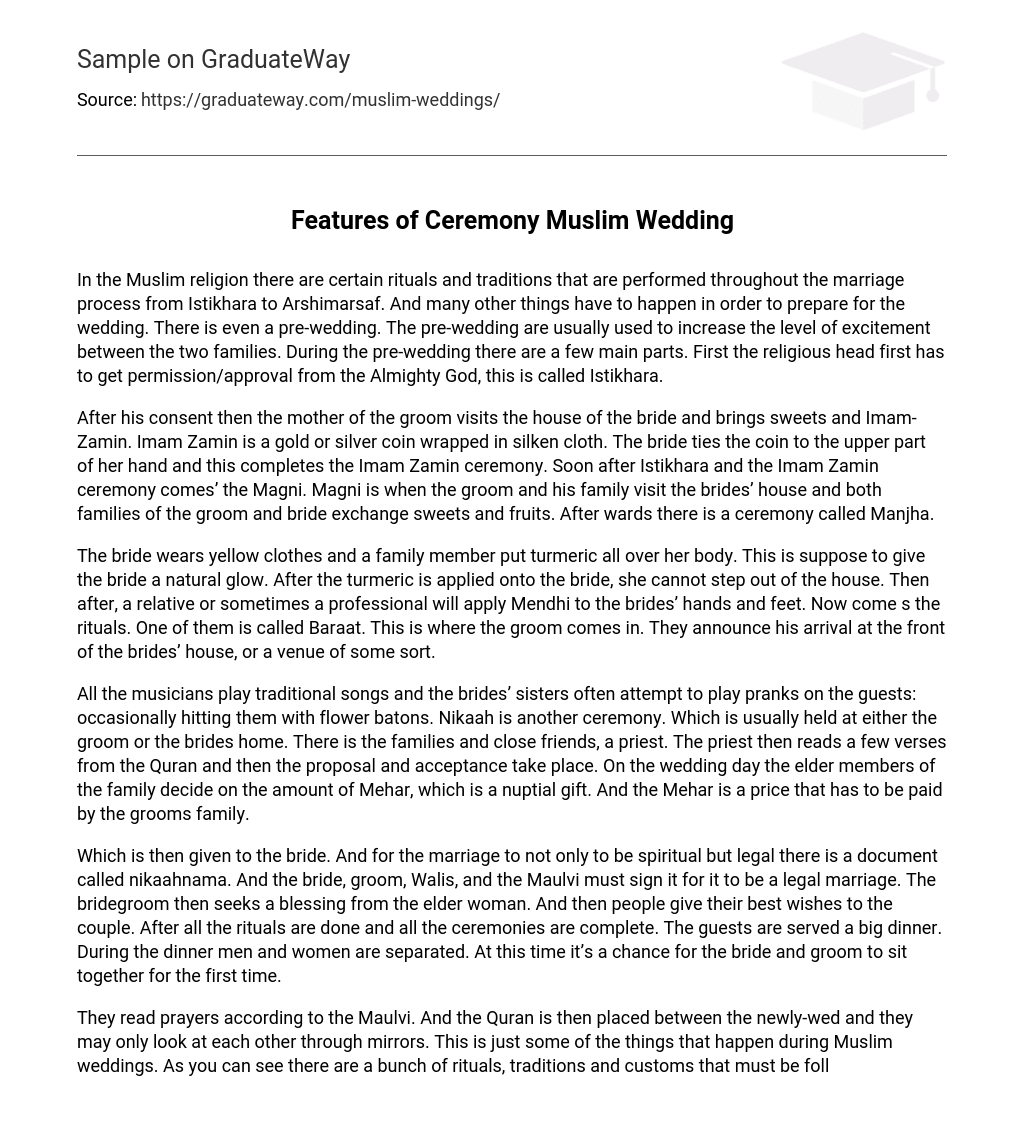In the Muslim religion there are certain rituals and traditions that are performed throughout the marriage process from Istikhara to Arshimarsaf. And many other things have to happen in order to prepare for the wedding. There is even a pre-wedding. The pre-wedding are usually used to increase the level of excitement between the two families. During the pre-wedding there are a few main parts. First the religious head first has to get permission/approval from the Almighty God, this is called Istikhara.
After his consent then the mother of the groom visits the house of the bride and brings sweets and Imam-Zamin. Imam Zamin is a gold or silver coin wrapped in silken cloth. The bride ties the coin to the upper part of her hand and this completes the Imam Zamin ceremony. Soon after Istikhara and the Imam Zamin ceremony comes’ the Magni. Magni is when the groom and his family visit the brides’ house and both families of the groom and bride exchange sweets and fruits. After wards there is a ceremony called Manjha.
The bride wears yellow clothes and a family member put turmeric all over her body. This is suppose to give the bride a natural glow. After the turmeric is applied onto the bride, she cannot step out of the house. Then after, a relative or sometimes a professional will apply Mendhi to the brides’ hands and feet. Now come s the rituals. One of them is called Baraat. This is where the groom comes in. They announce his arrival at the front of the brides’ house, or a venue of some sort.
All the musicians play traditional songs and the brides’ sisters often attempt to play pranks on the guests: occasionally hitting them with flower batons. Nikaah is another ceremony. Which is usually held at either the groom or the brides home. There is the families and close friends, a priest. The priest then reads a few verses from the Quran and then the proposal and acceptance take place. On the wedding day the elder members of the family decide on the amount of Mehar, which is a nuptial gift. And the Mehar is a price that has to be paid by the grooms family.
Which is then given to the bride. And for the marriage to not only to be spiritual but legal there is a document called nikaahnama. And the bride, groom, Walis, and the Maulvi must sign it for it to be a legal marriage. The bridegroom then seeks a blessing from the elder woman. And then people give their best wishes to the couple. After all the rituals are done and all the ceremonies are complete. The guests are served a big dinner. During the dinner men and women are separated. At this time it’s a chance for the bride and groom to sit together for the first time.
They read prayers according to the Maulvi. And the Quran is then placed between the newly-wed and they may only look at each other through mirrors. This is just some of the things that happen during Muslim weddings. As you can see there are a bunch of rituals, traditions and customs that must be followed. And it must also take a number of days to have a pre-wedding, wedding, and post-wedding. Three different weddings and all have different meanings and totally different tasks. Muslim weddings are full of culture, religion, and many traditions that will live on forever.





